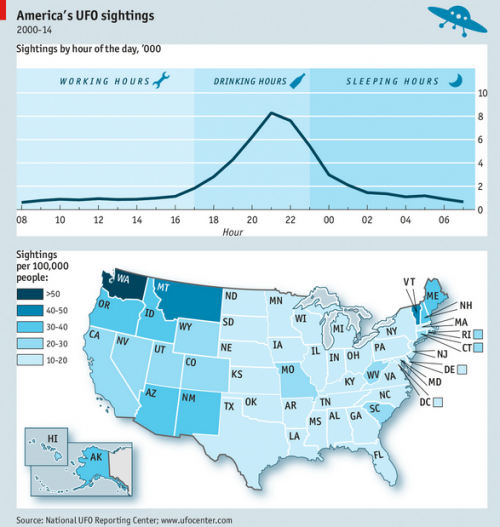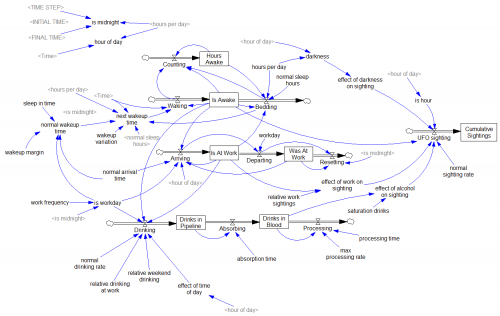The Economist reports on UFO sightings:
UFOs.vpm (Vensim published model, requires Pro/DSS or the free Reader)
The model is a mixed discrete/continuous simulation of an individual sleeping, working and drinking. This started out as a multi-agent model, but I realized along the way that sleeping, working and drinking is a fairly ergodic process on long time scales (at least with respect to UFOs), so one individual with a distribution of behaviors over time or simulations is as good as a population of agents.
The model replicates the data somewhat faithfully:
 The model shows a morning peak (people awake but out and about) and a workday dip (inside, lurking near the water cooler) but the data do not. This suggests to me that:
The model shows a morning peak (people awake but out and about) and a workday dip (inside, lurking near the water cooler) but the data do not. This suggests to me that:
- Alcohol is the dominant factor in sightings.
- I don’t party nearly enough to see a UFO.
Actually, now that I’ve built this version, I think the interesting model would have a longer time horizon, to address the non-ergodic part: contagion of sightings across individuals.
h/t Andreas Größler.



Which goes to prove that a: UFO’s can detect alcohol on your breath from light years away and home in on same and b: If you are sober and out of alcohol and see a UFO it’s good news because a: someone near you has alcohol and b: seeing a UFO together is proven to be a strong predictor of people sharing alcohol enthusiastically.
An interstellar breathalyzer? The upside of the UFO party seems to be offset by wondering if you were probed the morning after.